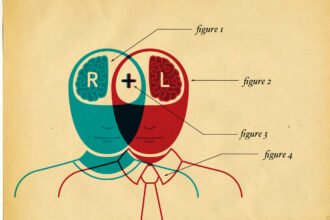In today’s world, analytics is a widely used terminology but with several different connotations. These differences arise from the various stages of evolution that business is with respect to using analytics. To me analytics essentially means “data driven decision-making” which gives a business manager the following capabilities –
In today’s world, analytics is a widely used terminology but with several different connotations. These differences arise from the various stages of evolution that business is with respect to using analytics. To me analytics essentially means “data driven decision-making” which gives a business manager the following capabilities –
- Manage and use large volumes of data from sources inside and outside a firm which may be providing meaningful information for the firm.
- Mine the data with sophisticated statistical or mathematical techniques and tools to find underlying trends and patterns.
- Use the identified findings and insights to make meaningful changes in the business strategy to realize incremental top-line or bottom-line impact.
Everyone is talking about analytics & the value it can create. But very few companies are successfully practicing analytics. Most have not been able to leverage the information assets within their company or outside to draw meaningful INSIGHTs for their business strategies. The lists of companies become even smaller when it comes to using those INSIGHTs to realize business IMPACT in a sustainable fashion. Most firms find it difficult to actually apply analytics in their operations, for a host of reasons.
Small & mid-sized firms are often short-staffed, do not have enterprise-wide IT systems, cannot afford to invest in expensive BI (Business Intelligence) solutions & often are not sure where exactly analytics can really give them the highest returns.
Larger firms, while they sure have a lot of data, are plagued with different issues. They have often invested a ton of money into enterprise wide data warehouses, BI, ERP & CRM solutions, just to get a single view of data – often with limited success. Now they are challenged with showing returns on these IT investments & ensuring that their BI outputs are still flexible enough to take care of varied needs across functions & geographies.
Analytics expertise often exists in these firms but is very dis-aggregated. There are various phases of analytical evolution and maturity that enterprises go through. I see three prominent destinations in the analytical journey of any firm:
- INFORMATION
- INSIGHTS
- IMPACT
The sole aim of analytics is to build bridge between the destinations and help enterprises seamlessly transition from one state to the other.
Destination “Information” – This is where firms understand the need to capture data and has the ability to summarize facts from historical data. At this stage one relies on data to comprehend what has happened till now and uses descriptive statistics like frequency distributions, cross tabulations, measures of central tendency to answer questions like “how much”, “when” and “what”.
Destination “Insights” – At this destination firms not only summarize data and build information but can do in-depth analysis of the data through hypothesis testing, association rules, time series analysis etc. to find trends, determine patterns, establish causality which are not so apparent in the data/information itself. This is when one understands “why” something has happened and is able to predict “what will happen next”.
While information is just the content, insight is the interpretation of the content that makes it relevant and applicable in the business context.
To bridge the gap from information to insights, one needs the following:
- Ability to use sophisticated data mining and analytical techniques
- Ability to understand the business context to convert data-based insight into more business insights
Destination “Impact”– Having several insights do not help a firm if it they don’t have an impact on top or the bottom line. Business should realize measurable impact from the insight. At this juncture, the business is able to design enterprise wide strategies using the insights, take big and small decisions based on the insights, revamp and restructure operations centered on insights and is able to realize, track and sustain palpable impact over a long period of time. Insights result in impact when it is acted upon and is made into a more institutionalized learning for everyone. To bridge the gap from insights to impact, one needs the following:
- Ability to create business strategies which then get embedded into decision process or business systems
- Ability to track the impact and refine the decision engine based on changing dynamics of the business or the market
- Ability to institutionalize analytics in all relevant areas across the enterprise and empowering the business managers to operationalize analytics in day to day work-life.
Different companies are at different destinations and find it hard to move to the next.
A company will be truly successful in using analytics when it has a model to bridge the gap from INFORMATION to INSIGHTS to IMPACT. It is only a matter of time when analytics is going to be an integral part of business decision-making for almost all companies. It is going to be something very similar to the ways accountancy in the first half of last century and computer science in the end of last century got embedded in most enterprises across the globe.
Today’s enterprises cannot operate without computer science and accountancy. Similarly as enterprises understand the value of data, analytics is going to be embedded in every organization in this century. Such sustained analytical decision-making will not only multiply value manifold for each of these organizations but the economy will also gain as a whole due to this wide-spread adoption. The power of analytics in transforming businesses is unassailable and the change is inevitable.
The author is the CEO and co-founder of BRIDGEi2i Analytics Solutions. He can be contacted at prithvijit.roy@bridgei2i.com. www.BRIDGEi2i.com






